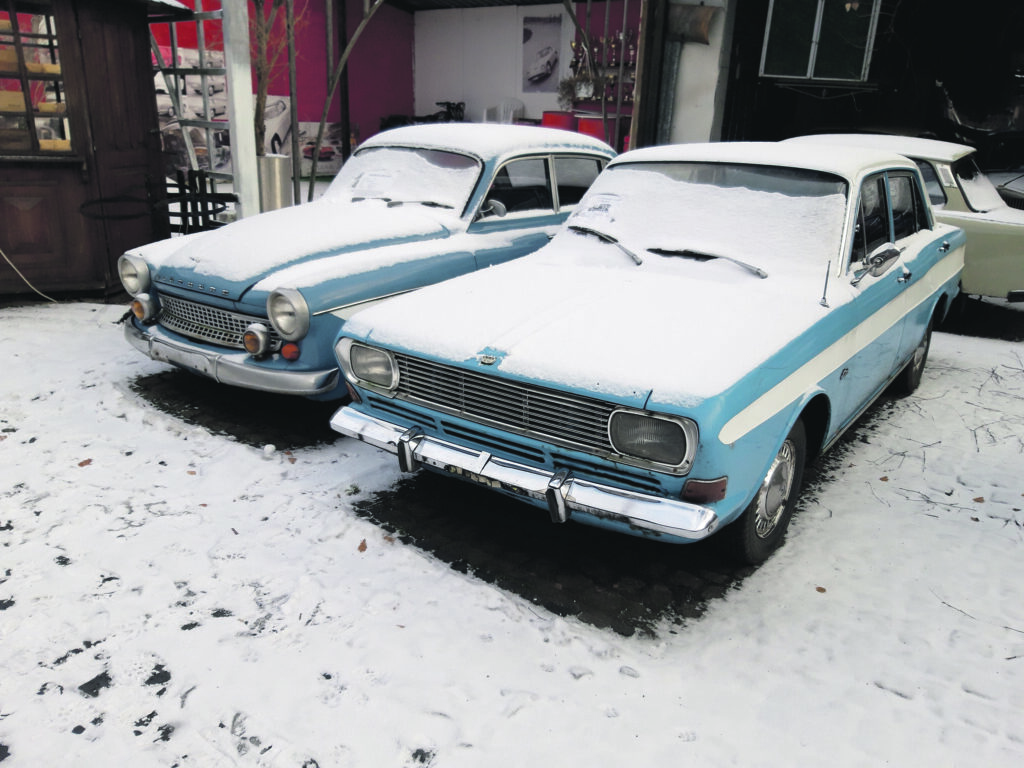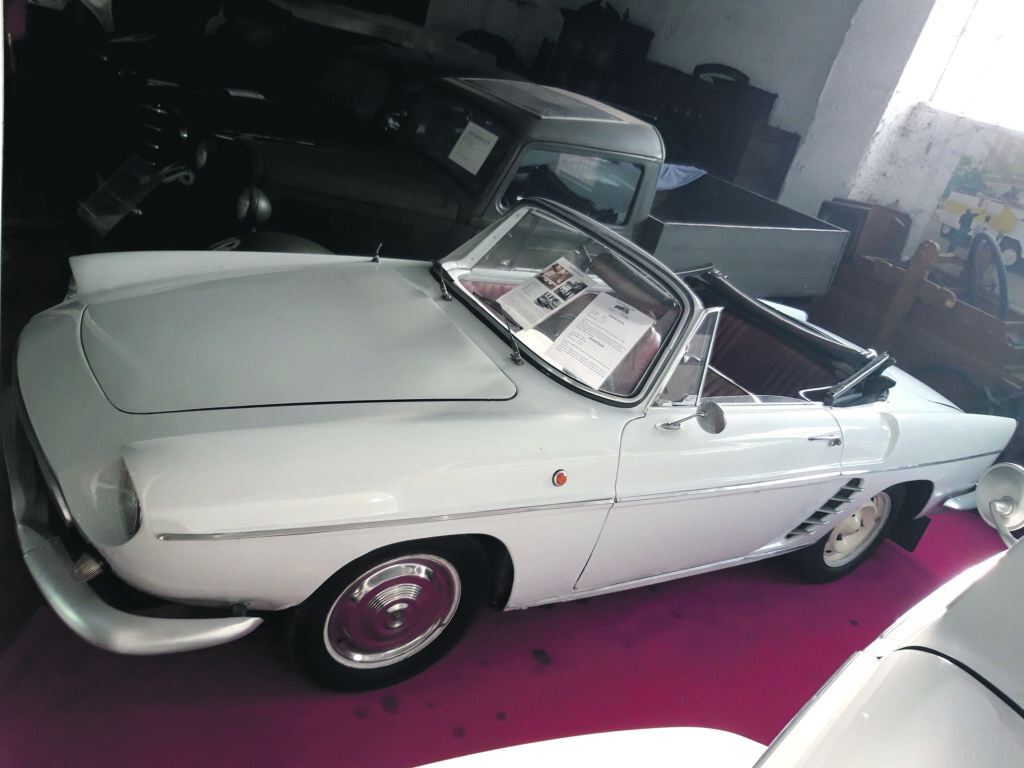The Maltese and the people of Poland have quite a lot in common. The red and white colours make up the flags of both countries. Similar to the Maltese, the Poles have long-standing and deep Catholic roots. Malta and Poland have a history of lengthy periods of rule and domination by foreign powers. The two nations were heavily bombed during World War II and similarly, with true grit and determination, succeeded in rebuilding their country.
Like their Maltese counterparts, Polish old motors aficionados had to be very creative in, phoenix like, restoring their four-wheelers after the war, for besides the bombing, the military authorities in both countries had requisitioned all private cars, which suffered a lot in the hostilities or were destroyed.
To have a closer look at their efforts, I recently visited the Museum of Motorisation and Technology in Otrebusy, about 50 kilometres outside Warsaw.

The museum opened in 1994 and has over 300 old motors of all shapes and sizes. Besides, there are dozens of old motorbikes, scooters, bicycles, and equipment related to the four-wheeler, plus hundreds of model cars displayed in large showcases. The compound is made up of a huge barn leading to a large open yard, after which comes a smaller barn. The entrance to the museum is packed with vehicles large and small left in the open air – my heart skipped many a beat when I saw such precious pearls barely visible under a thick white blanket of snow inches deep, as it had been snowing all night and the temperature was well below zero.
Car production in Poland has always been a very important part of the economy. The first vehicle was produced by the Ursus company in 1893. Popular models during communist rule were the Warszawa, the Syrena, the Polonez, and the Mikrus. The country had, and still has, successful joint projects with Italian giant Fiat, resulting in a number of Fiat Polski models.
A number of them grace the museum, including the 125, 126 and 127. Four red Fiat Polski sports cars are crammed together, with a long row of antique motorcycles dangling above them on shelving protruding from a nearby wall. For a time, Poland also collaborated with neighbouring Czechoslovakia in car production, and a black 1928 Praha made in Oswiecem (Auschwitz) harks back to this period.

The first post-war car designed in Poland was the Warszawa, and a grey and light blue 1955 black Srodmiescie model shows how powerful, sturdy and rugged these vehicles were. Named after the capital city, the first model came out in 1951 and was a licensed copy of the Russian Podeba (victory) vehicle, authorised with the blessing of Soviet Union President Josef Stalin.
Another Polish car in the museum is a red 1957 Mikrus MR-3000 model. This was a micro car produced between 1957 and 1960. Only 1,728 of them came off the line. Designed as a cheap car for the masses, it came about when spare production arose at aerospace manufacturers WSK Mielec and WSK Rzeszow, the former producing the body and the latter the engine. The Mikrus was very popular initially, but high production costs and an expensive price tag saw its demise within three years.

Another small Polish car is the Syrena, produced between 1957 to 1983, a lengthy period during which only minor changes to the model occurred. Manufactured in various models, the most popular was the 105, a pink example of which is at the compound. All were two-door sedans with a two-stroke engine. A van and a pickup were also produced, while a coupe sport and a hatchback remained prototypes only.
Pre-war Germany is well represented in the displays. A rare, white, 1939 collaborative NSU-Fiat 500, made up of 300 parts, was produced by Karosserie Weisberg. Also made in Germany in 1928 under licence from the US is a two-tone, black and brown Ford AF. A red 1939 BMW sits next to a blue BMW Wartburg model. A couple of black Horch limousines from Automobile Werk Eisenach – now known as Audi – date back to 1938, the same production year of a white Mercedes 170 V cabriolet. This Mercedes model was a market success, and the most produced car of Daimler Benz until the outbreak of the war. It was also the first Mercedes vehicle to come off the line once peace was restored.
The oldest exhibit is an American J.A.G. from 1897. Other iconic American models feature a 1923 Oakland, a white 1959 DeSoto – part of the Chrysler company – and three Durants in white, black and green. One of the largest vehicles on show is an enormous 1924, 12 cylinder Packard Landaulet, with a dark blue driver compartment and a black passenger rear, fitted with thick light brown leather, resembling more a plush, circular and sophisticated sitting room sofa. In their time, Packards were the perfect combination of all that is best in cars – good looks, great design, high quality and reliability. Many prestigious Packards had luxury bodies and interiors made to special requests from very rich clients. Before World War II, Packard cars were the official vehicles of the US government.

Historically, Poland has always had a bittersweet relationship with Russia, and this is reflected in the arrangement of Soviet Union cars in the museum. Various models, including a 1949 Podeba M20 and a 1959 GAZ 13 Czajka, are to be found freezing in the snow in the open yard connecting the two barns. There are other old motors in this yard – including a number of Rolls Royce and Bentley models – but unlike the Russian vehicles, they are under the cover of overhanging awning.
Other European marques abound – one finds an Italian Lancia, a 1978 Swedish Volvo Bertone, and a French grey 1972 Peugeot 304. Another attraction is a French, white, 1960 Renault Florida convertible, highlighting the vibrancy and elegance of the French style in the 1960s. This model also came to symbolise the end of the difficult post-World War II period, and the return of cars bought for pleasure, grace and performance.

The Bible of old motors enthusiasts is divided, like the religious Holy Book, into two parts, the Old and the New Testament. The classic cars New Testament lays down that an old vehicle should be thoroughly rehabilitated – sometimes undergoing a nut and bolt restoration process – to a showroom, ship shaped condition. On the other hand, the classic cars Old Testament strongly states that a period vehicle should be left as found, with minimal change or intervention, in order to return on the road.
Without a shadow of a doubt, the Polish Museum of Motorisation and Technology stands firmly behind the teachings of the Old Testament. With its barn-find atmosphere, eccentric and cluttered arrangements, free range lay out, dust, cobwebs, warts and all, it is breath of fresh air, far removed from the usual clinically clean and formally organised classic car museum.
(First published in Times of Malta on March 31, 2019)











